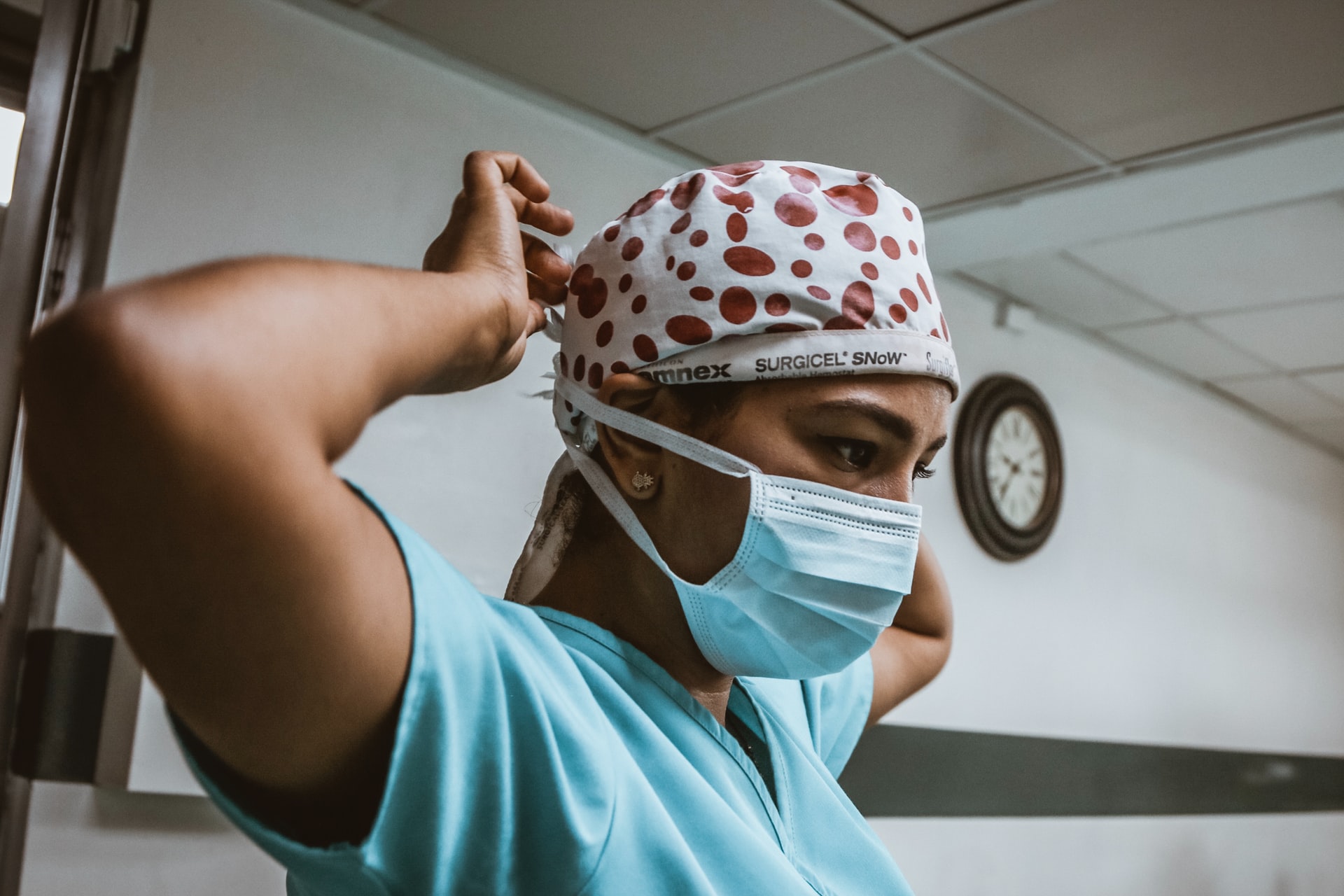It takes global catastrophes like the Covid-19 pandemic and World Wars to get people to realize how the marginalized community of medical nurses toils to safeguard a country’s civilians. It is disheartening that they are hailed as true soldiers only when a disaster strikes. This article aspires to throw light upon that fragment of the Indian nation which is often looked down upon and bring to the forefront the hardships the nursing professionals endure. It is recorded in tribute to Ms. Lini Puthusserry, the brave nurse who lost her life fighting the Nipah virus in Kerala.
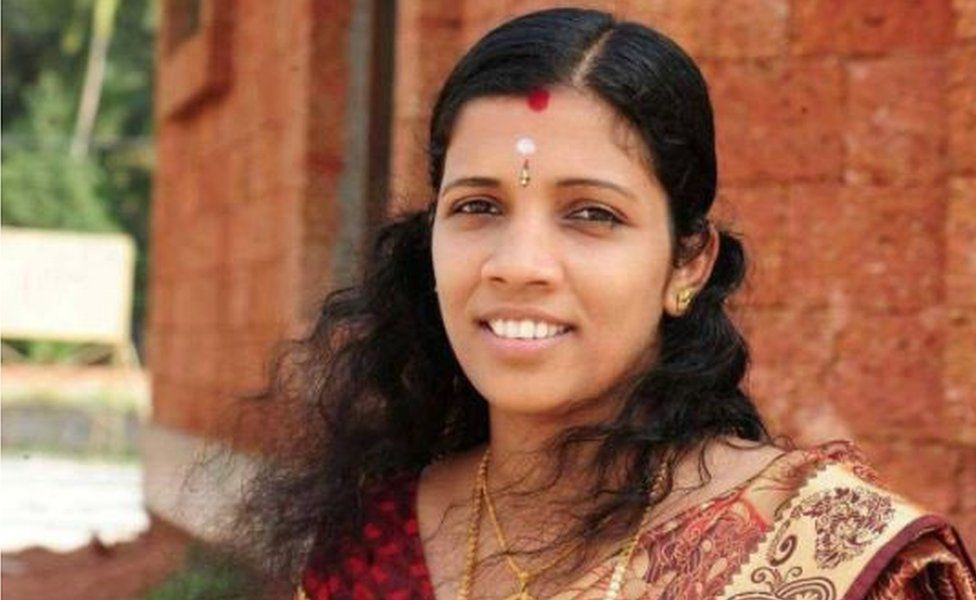
The month of May 1942 saw the formation of the Women’s Auxiliary Corps (India) by the British. This welcomed female volunteers into the war front. This was a noteworthy step towards the recognition of women in combat roles which wasn’t possible up until then. However, civilian women had already taken up combat roles all across the globe by then. Women of the orient and occident were filling in as medical nurses many years prior to the formation of the Auxiliary Corps. Yes, being in a uniform had meant more than one thing.
In spite of being so intrinsically bound to the development of a nation, it is debatable whether nurses are given due credit as the manpower of the Indian subcontinent. It becomes self-contradictory to explain the realms of injustice faced by this community which is largely constituted by women, in a language that is already gendered. India popularly perceives the profession of medical nurses as being inferior and undesirable, with very little scope for promotions or monetary gain. This also contributes to a commendable portion of professional nurses migrating overseas in search of better wages, working conditions, and respect. More often than not, Indian nurses are romanticized as angels during crises and forgotten once they settle down. This article will explore such discursive constructions and contradictions related to the nursing community of India that faces discrimination on multiple fronts.
An Interaction with an Indian Nurse
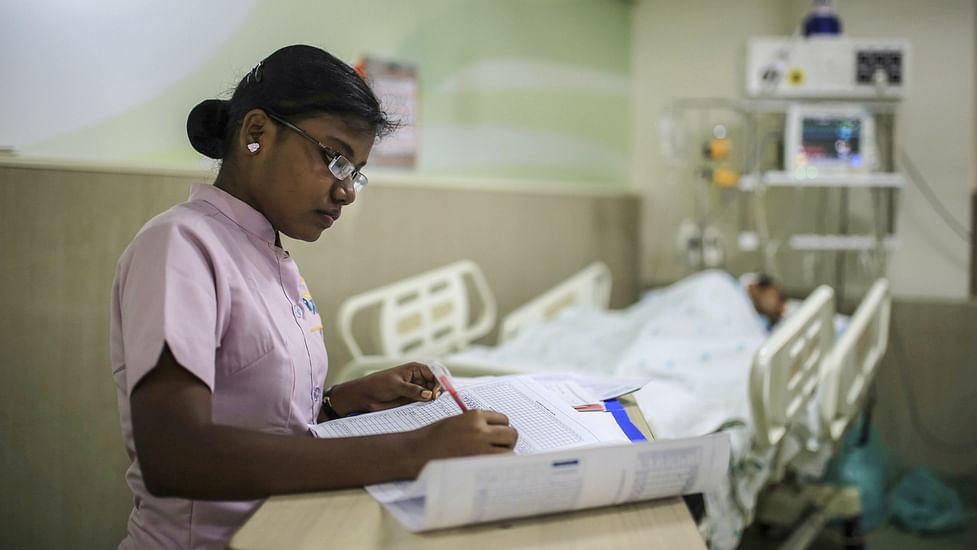
Following is a brief interaction with a medical nurse from a private hospital in Palakkad, Kerala (India). Both the nurse and the hospital management do not wish to reveal their identities, in fear of unwanted attention and bad publicity. In a few questions, the professional was able to reveal her apprehensions regarding her vocation and the hardships her community goes through on a regular basis.
How did you get into this profession?
I initially wanted to be a doctor. I had even spared a few years to study for the All India Pre-Medical Test (now, the National Eligibility cum Entrance Test) as soon as I completed school. But I couldn’t land a merit seat as my rank was pretty low. Also, my family could not have afforded to pay for a management seat. But I knew I wanted to pursue a career in the medical field. So, my next option was to go for B.Sc. Nursing.
How would you define your profession in the years that you have been active in it?
I have been a nurse for more than seven years now. It has been a wholesome journey. I have served in different hospitals and clinics across Palakkad. I have had the opportunity to work with many reputed doctors, helping those who are in need day and night. However, in these years, my vocation has suffered many setbacks. That we (the Kerala community) have had many health emergencies in the recent past is no secret. The medical community was possibly among those who were hit the hardest. We had to deal with two floods, a Nipah attack, and now, COVID-19, which continues until today. During the past four years especially, the workload has been more than hectic. However, in addition to serving an entire state day and night, we receive mediocre wages and no other incentives from hospital management. I work in a private hospital. Government hospitals are, of course, a lot lenient on their staff on the salary front.
Would you be comfortable with sharing your salary details? There have been recurrent debates related to the unfair wage systems nurses often have to comply with. Would you agree that your community is underpaid?
Yes. 100%. In this hospital, for example, we are paid a minimum wage of 5000-6000 INR. Nurses who began their careers recently have to make peace with 5000 INR. Once you hit the 10-year experience mark, you could receive up to 15,000 INR. Eventually, by the time we retire, we could receive a maximum of 49,000 INR. That is the case of public sectors and a few, reputed multi-specialty private hospitals. More often than not, nurses like us, who work in small private hospitals receive a maximum of 15,000-18,000 INR by the time we retire. For a profession as sensitive as ours, I believe this salary is extremely low. Not just the salary, we have to deal with personal and social repercussions as well.
Could you elaborate more?
As a nurse, I am often looked down upon by my family and society. People, strangely, do not regard this as a good profession. I find this prejudice really hypocritical because as a society, we shower accolades and money over doctors. We also fall into the same sector and do a lot of the jobs that doctors do. In fact, without our assistance and constant support, doctors cannot do their job well. I am not saying we should be regarded as highly as doctors. But we would appreciate some respect as well.
Have you ever thought about leaving this job?
It’s easier said than done. I have familial ties to this place, kids to take care of and a home to protect. Like many of my colleagues, I too was fascinated by the idea of leaving India for better job prospects. But I knew I wouldn’t be able to meet many of the criteria required to migrate. For example, I knew I cannot pass the various English proficiency tests necessary to attain a visa to another country. My education did not support me enough to easily qualify for such tests. I could not raise the initial funds required for migration either. So, I thought attending such tests would be in vain. Soon, I was married and was bound to a lot of familial responsibilities. I had to make peace with this job as it caters to a lot of my other comforts. It is true that I have had to compromise on a lot, but this is my life right now. The struggle has become a part of the routine filled with night shifts and unending work hours.
This conversation served as the inspiration for this article. The following sections define the various problematic intricacies associated with this noble profession and expand over the injustice this community faces.
The Indian Healthcare System
Nurses are the hearthstone of the healthcare industry. A well-nurtured and skilled professional force of nursing staff is vital for every hospital. An effective healthcare system is a determining factor for the development of a nation. India is a developing nation with a flawed healthcare system that is downright fragile in places. Our country needs to give precedence to the health of its doctors and nurses amidst the pandemic that has struck the world today. Not just in the Indian subcontinent but all around the world, many healthcare workers are paying the price for the shortcomings of a suffocated healthcare system with their own health and lives. There might not be a more suitable year to analyze the inadequacies of the Indian healthcare system in the early 21st century than 2020-21.
Marginalization pushes multiple populations to the fringes of society with little to no attention given to their voices. There exists a spatial as well as a temporal aspect of reality associated with marginalization. In the Indian context where 80% of the population lives on a wage of 2.5 USD or less per day, marginalization is the norm. Many communities in the country do not recognize their status and lack basic rights. Communities including Backward Castes aspire for better living conditions and remain ignorant about their right to a proper social standing. They need to be brought in as active participants in policymaking. Apart from ethnic groups, many professional communities also face peripheralization in India. The scavenger community is a prominent example. It becomes overwhelming to study the prevalent marginalization among urban professional groups as well. The case of medical nurses in India can be seen in this light.
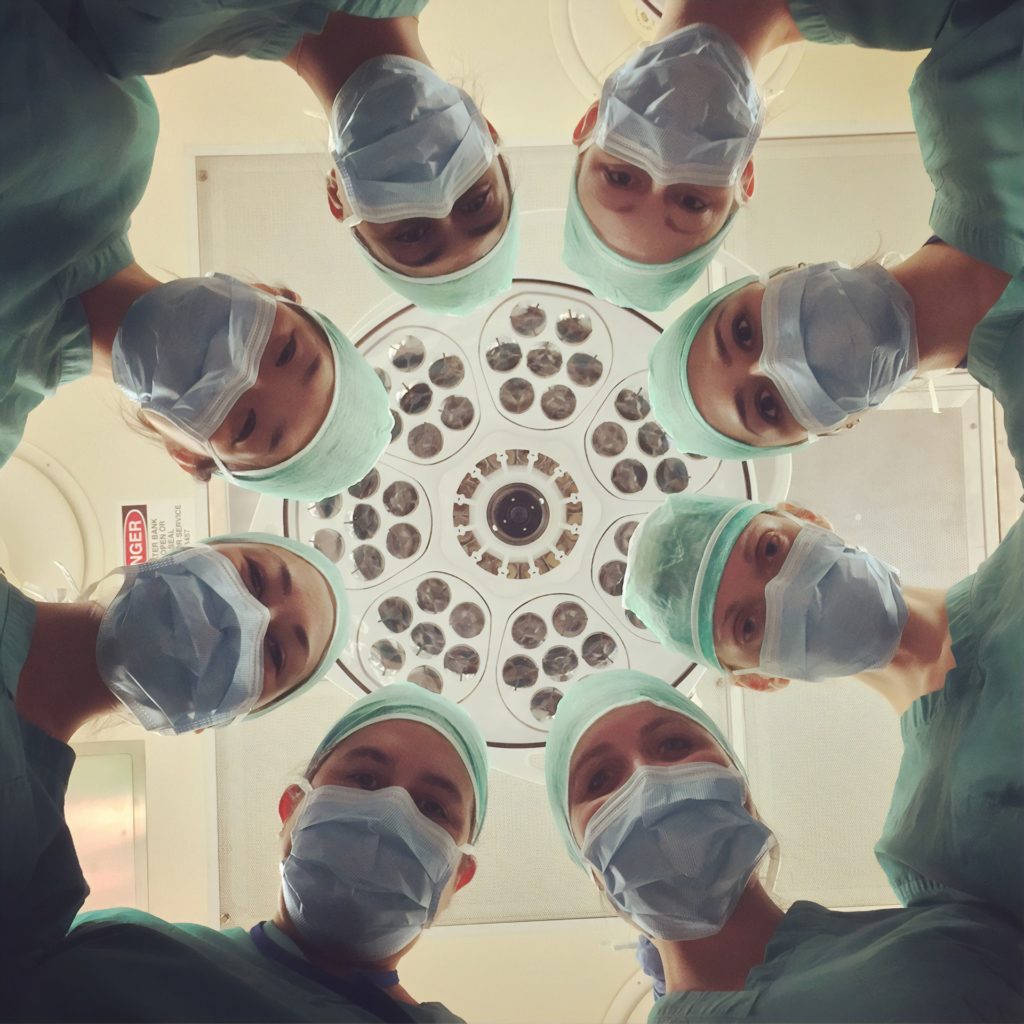
A list published by the National Federation of Orders of Surgeons and Dentists reveals that 66 doctors died of Coronavirus in Italy alone. Nearly 17000 medical professionals were affected in the country. The lack of protective gear is hence a serious concern in contemporary times. The WHO records that nearly 180,000 healthcare workers and professionals may have died between January 2020 and May 2021. Shifting our focus to India; as of February 2021, 174 doctors, 116 nurses, and 199 healthcare workers have died fighting the Coronavirus last year. India has had more than 400,000 deaths with more than 30 million positive cases recorded so far. If the death rates in superpowers like Italy and USA are baffling enough, considering India’s healthcare facilities (or the lack of it in various states) is scarier. Fear hangs over the medical staff in India and the Indian Medical Association has raised concerns all throughout the two years of lockdowns via various media sources. The threat involved with paramedical workers, nurses, ward assistants, and cleaners is perplexing. Dr. Hemant Deshmukh, Dean of Mumbai’s KEM Hospital, stated how it is vital to view every patient as a potential Coronavirus patient, who can affect the medical workers. To this particular hospital alone, nearly 100 patients are being brought with symptoms of cold, cough, or fever because it is a testing center for Coronavirus. In April, he expressed his worry regarding the mediocre medical facilities in Mumbai that could catastrophically affect the state.
Now as we are talking, the Omicron variant of the Coronavirus has entered the Karnataka state in South India. Eyeing a possible surge in cases due to the new threat, many doctors have begun protesting for the demand to beef up the number of healthcare workers, in case the situation blows up like it did in 2020. The loved ones of the healthcare workers have been clearly going through a fearsome time. Many medical professionals continue to contact their families through social media and video calling. The situation has called for them to be socially distant from their families. There still is an impending risk of exposing aged parents, young ones, and especially infants to the possibility of infection. It is of great relief that the 944 million adults of the country have been vaccinated, reducing the risks of fatal repercussions. While many of us sat in the comfort of our homes, cursing the lockdowns, we conveniently forgot the hardships medical and government staff go through. And no; hailing them on social media doesn’t effectualize into deserving incentives.
Understanding Marginalization
Marginalization came to be put forth as a nursing theory by J. M. Hall in 1994. He first recognized seven properties of marginalization to be intermediacy, power, reflectiveness, liminality, voice, secrecy, and differentiation. After having undergone much change over the years, in 1999, marginalization expanded to be addressed in terms of seven more global yardsticks. They are exteriority, constrain, eurocentrism, economics, testimonies, hope, and seduction. The nursing profession became intricately bound to these gauges.
Hall’s theory expanded over to the study of constraints faced by student nurses by E. P. Anderson in ‘Marginality: Concept or Reality in Nursing Education?’ in the Journal of Advanced Nursing in 1995. Entering into the 2000s, the theory helped the study of various patient populations including chronically ill adolescents, the homeless, drug users, and women in general. Hall conceptualizes marginalization as the “process through which persons are peripheralized based on their identities, associations, experiences, and environment”. The Intersectionality Theory proposed by K. Crenshaw posits that different marginalities are mutually inclusive in a way that they need to be conceptualized as one is also relevant in this light. Intersectionality identifies race, class, gender, ethnicity, sexuality, nationality, ability, and age as “reciprocally constructing phenomena that in turn shape complex social inequalities” (Collins, McFadden, Rocco, & Mathis, 2015).
Being a Medical Nurse in India

There is more to nursing than what meets the eye. Imagine a hospital without them and one shall appreciate their worth. A nurse’s professional skills and training contribute significantly to successful treatment outcomes. It is rather appalling that urbanization hasn’t touched the healthcare system in India in all the right places. The remedial aspect often takes a backseat in our healthcare sector. Curative care in India is still unaffordable to the majority of the population. The nursing department has to take up managerial duties over patient care. Reduced workforce and lack of quality care lead to an overburden. The challenges faced by nurses in the country today arise at the organizational, state, and national levels. It is of utmost importance to recognize and address each of their problems individually if they are to be removed at their roots. The change in the demographics of medical ethics is a significant cause of most of such challenges. Advancement in medical technology, profit-earning mentality, immigration, education-service gap, and economic recession are all causes for the same. The ongoing troubles associated with the profession lead to fewer students opting for nursing and for professionals to migrate to other countries for better remuneration and working conditions.
Challenges
Mental and Physical Repercussions
Dated March 14th, 2020, a report featured in Times of India read the hitches faced by the community of medical nurses in Kerala amidst the Covid-19 pandemic. While the exposure to the virus itself is a given threat, certain outdated social prejudices also seem to chase them around. The report under scrutiny is one based in Kottayam Medical College. However, since the profession of medical nurses is usually looked down upon, the case study can be viewed with reference to the general attitude the Indian community holds for them. The religious justifications for the aversion would make a whole other story. We are analyzing India’s most literate group of folks here. While most often the nursing community is collectively associated with a group of white-wearing “angels”, the comparison remains ultimately oxymoronic as opposed to the real conduct offered to them. It isn’t a matter of respect they receive alone. They are amongst the most underpaid laborer communities in the country today as opposed to their skill and service.
As far as the case of the nurses based from Kottayam is concerned, they were requested to vacate their rented residence by the landlord who feared their presence in the house due to the risk factors involved. After a long struggle with the Medical College authorities, the nurses were provided with a temporary abode in the isolation ward of the hospital. The report in Times of India narrates the difficulties faced by these nurses who had voluntarily taken up this duty. The nursing officer at the Medical College Hospital raised concerns over the situation of the nursing staff in Kerala today. She throws light upon the reality that if most of the nurses choose to stay at home during the crisis; the situation would tumble down to a catastrophe. While the entire nation was showering praises upon the state government of Kerala for their effective measures during the pandemic, nurses remained an easily forgotten privilege to the commoners.
The occupation involves everything from pushing trolleys and patient beds to delivering personal hygiene to a very heterogeneous society. There is a humongous workload involved in the profession. When the pressure enforced over any employee or laborer exceeds limits, it leads to poor performance; in this case, it would lead to less effective care. Workplaces sadly offer mental violence in the form of threats, verbal abuse, hostility, and harassment. This is strikingly visible in the private sector. Psychological trauma and other repercussions are commonly seen among them. From patients and their visitors to co-workers; there are many sources for such violence. From 2002 to 2013, incidents citing workplace violence were four times more in the healthcare sector than in private industries on average. On top of all this, the long working hours and the assigned tasks of duty affect the staff adversely. Very often, they pay the price with their own lives. The first part of this article pays a tribute to the late Ms. Lini Puthussery, the 31-year old nurse who had to give up her life in the fight against the Nipah virus in Kozhikode. If she isn’t recognized as a martyr, there would be few who could qualify as one. She was awarded the Florence Nightingale Award posthumously.
It also needs to be addressed here that no nurse working in private hospitals in India is given any kind of employment benefits like Provident Fund and gratuity. Even worse, they aren’t even provided health coverage. Their qualifying certificates remain locked with the authorities of the hospital until their contract bond period expires. Having taken into account these realities, it wouldn’t be surprising to note that there is a crippling shortage of nurses in India today.
Shortage of Workforce
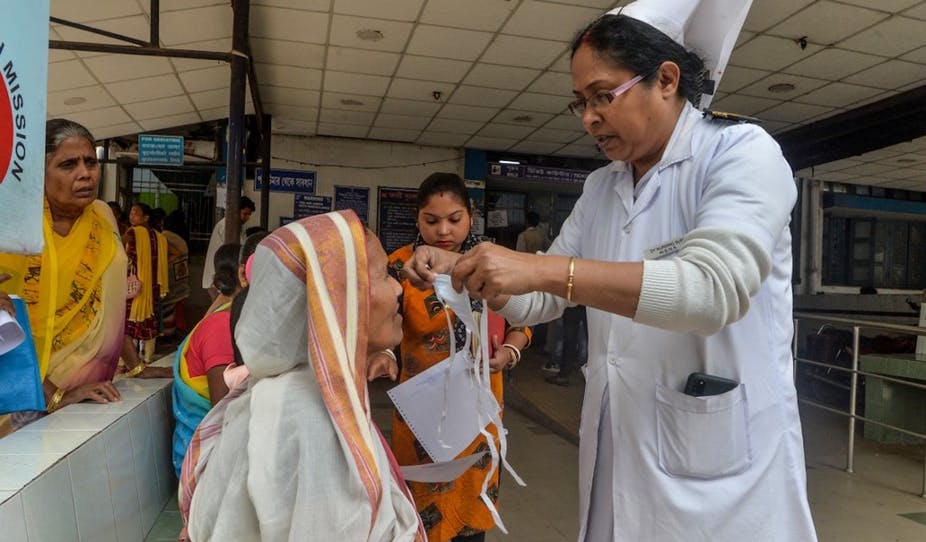
Both with reference to revenue and development, the healthcare sector in India is a humungous one. Even though most of its employees face challenges, the nurses apparently go through the hardest of hardships. There is a never-ending need for an ardent workforce in this sector to meet the changing demands. The most appropriate time to commit to this article, hence, would be now; when the entire world, including the superpowers, has fallen to its knees before the Coronavirus pandemic. The healthcare sector is one such area whose requirements never see fulfillment. As far as India is concerned, there exists a shortage of 600,000 doctors and a whopping 2 million nurses. The deficiency in the number of nurses in our nation also accounts for the lack of respect involved in the profession, along with low salaries. Long working hours, overload, and the physical and psychological threats involved in spending hours at a hospital regularly are some of the other complications involved in the job.
Long Working Hours and Poor Work Environment
Nearly 88% of nurses in our country work for about 8-10 hours daily in addition to taking up 2-3 times of overtime duty each week. That means, nearly 35% of nurses do overtime duty more than thrice a month. In the medicine and surgery departments in health care, approximately 53% of nurses are involved. Here, each staff handles more than 6 patients. As per Indian Nursing Council (INC), the nurse-patient ratio must be 1:3 (in general wards of medical colleges), 1:5 (in district hospitals), and 1:1 (in ICU and other critical areas). For 28% of Indian nurses, a break is availed after 4 hours of work. Nearly 26% take no such breaks and toil up to 8 hours consistently. 74% of nurses stand for about 4-6 hours daily that eventually results in stress over the lower limbs. We should also keep in mind how all this is carried out in a very uncomfortable work environment since India lacks significantly on that front.
Low Wages
Nursing is among the most frowned-upon professions in our country. Alongside dealing with ethical issues that accompany this service-oriented occupation, comes the burden of extremely low income. A fresher would enter a private Indian hospital with a maximum wage of 8000 INR. Usual cases are that they receive only about 3000 INR to 4000 INR per month, despite the working hours. This itself is against the labor standard of 6000 INR (which is still very low). Of course, there are hikes in salary that would come with experience. However, many experienced nurses have expressed concern over how hospital managements often pay them between the margins of 9000 INR to 12000 INR per month. Since the veto power rests with the management of the hospitals, employees are required to sign bonds that would dictate a time period within which they cannot quit. During this time, which could last as long as a few years, nurses would pledge their certificates into the custody of the hospital. Breaking such a bond may entail shelling out 50000 INR to 100000 INR in return for a release.
Many young aspirants take up nursing with the hope of flying abroad for better wages and desirable working conditions. The average salary received by a nurse is about 150000 INR in the GCC Countries. Countries like Australia (56000 USD), Canada (51000 USD), Italy (59500 USD), Ireland (64000 USD), and the like are hence healthy prospects for nursing aspirants. Undoubtedly, the constant demands made by Indian nurses and trade unions seem justified in this light. The various arguments put forward by the nurses of the KVM Hospital (Kerala) who went on strike in 2018 are fair mandates. An impending lack of job security also bothers these professionals all across the country.
Lack of Recognition and Societal Challenges
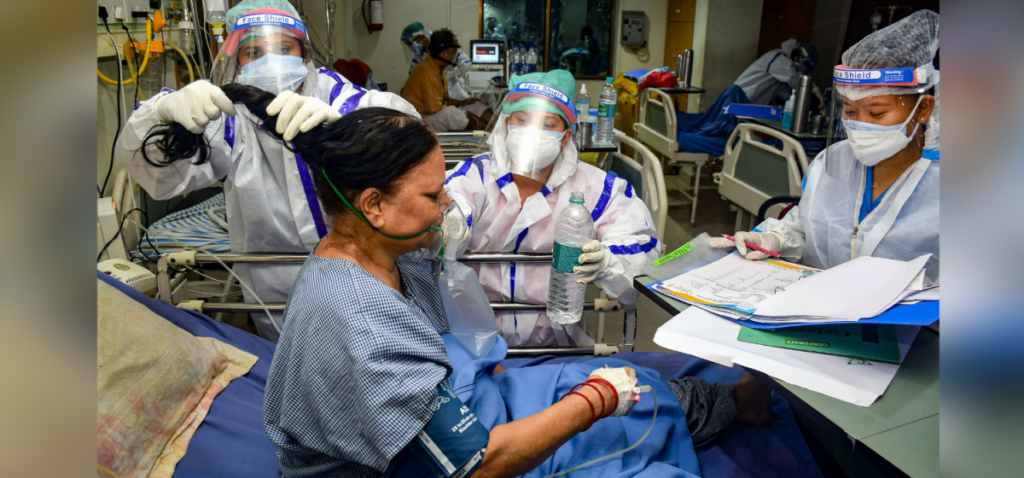
Nursing as a practice dates back to very ancient history in India. Before the 20th century, nurses were mostly men who were assisted by women as midwives. Today the tables have turned and nursing is largely acknowledged as a feminine vocation. We often hear people frowning upon the idea of men who are nurses. The generalization is so grave that in order to specify the gender, the term “male” nurse is often employed. Men or women, nurses are skilled professionals who undergo vigorous training to graduate. Sadly, they are seldom recognized as such. They are often looked down upon by society as unskilled, morally suspect women who are akin to servants. There is a considerable gap between what they are and how they are perceived. Again, this case holds largely true for women. Coming to think of it, patriarchal prejudices seem to have had a lot to play in establishing the profession as a woman-centric one as well as defaming it. These undesirable tags thrust upon them bring about painful distress in them regarding their status. They are only occasionally given due credit; even by their superiors and co-workers. Clearly, nursing in India is no cakewalk. It is amongst those professions that have the least autonomy. But this is the case of India alone.
There is very little hope for growth in this field as well. In the nation, nursing colleges are increasingly falling vacant due to the lack of interest. This is precisely why there is a lack of an adequate workforce. As for those who are qualified; they are in quest for a better life abroad. India with an already dismal health system is suffering more as nurses are migrating to other countries. If they begin to receive half the respect doctors in the country receive, a repair can be done sooner.
Human Rights Violation
As briefed above, the profession of nursing has highly been regarded as a feminine one. This notion germinated in a very patriarchal soil. Modern nursing dates back to military nursing in India. It runs back as far as when the East India Company initiated a hospital for soldiers in 1664 in Madras. The first among the nurses were sent from London to this military hospital. (Today, nurses of Indian origin leave the country to yesteryear colonial abodes for security.) Such is the history of nursing in India. Today, however, nurses being majorly women, go through sexual harassment. The rape case of Aruna Shanbaug, an Indian nurse who spent 42 years in a coma after being brutally raped and strangled, had taken the nation by storm in 1973. She finally succumbed to death in 2015 in the very hospital where she worked and was raped brutally. At age 25, she was sodomized by a KEM Hospital (Mumbai) cleaner who strangled her with metal chains and left her to die. Although she survived, it was only through a vegetative state till her death. Her struggle with India’s euthanasia law went down in history. The absence of the “right to die” in the Indian legal system was brought to the attention of the nation. Today, our legal system allows passive euthanasia.
While the Prime Minister has called the nation’s healthcare workers the “frontier soldiers” during the Coronavirus outbreak, many women in this professional front struggle. An FIR was filed by a doctor of AIIMS in which she complains how she received rape threats from her landlord when she denied immediately vacating her apartment. Similarly, a doctor was attacked in Telangana by the police on her way to work. Such cases still make headlines despite the gravity of the terror that engulfs the nation. Many nurses have come forward with complaints of how they were sexually assaulted by doctors in the past years. The physical affinity their profession demands off them is often misjudged thus and taken advantage of. There is an underlying tragedy in this.
Making a Difference

Rectifying these errors would not only equip medical staff with a better professional life but also will help improve the country’s healthcare system immensely. To achieve universal health coverage and to ensure access to essential services, the prime focus should be on the workers. We need to improvise pragmatic solutions to meet the needs of nurses and other such workers; a large portion of which are women. As a democratic nation, each citizen is responsible to provide better lives to those who still remain marginalized.
- Establishment of a Positive Environment: The environment of most hospitals is patient-centric. The workers perform their duties providing supreme importance to the patient. However, if they are to give their heart to their commitment, the workers too need to be armed with a sense of security, professionalism and transparency. This is practically the only way that could ensure effective care. Not only the health and wellbeing of the patient, but also those of medical staffs need to be given due importance. Especially when nurses are concerned and mostly women; they need to feel empowered and safe in their work milieu. Effective interpersonal communication would provide nurses with a sense of self-importance and help mitigate fear and hesitance, if any. Their opportunities need to be recognized and catered to. In simple words, it is high time they are removed from the bottom of the pyramid.
- Workload Balance: Rather than flooding nurses with inhuman work schedules, with an effective distribution system, they need to be democratically dispensed. However this is possible only if and when the lack of workforce is rectified. By establishing nursing as a noble profession which it is and ensuring it as a safe one for women and men, this may be achieved. Non-productive and redundant tasks need to be avoided from their duties. Nurses need to be provided with incentives time to time for the service they do. They shall be given enough autonomy in their spheres. This would only improve their skills and breed sincerity in work. There should also be an efficient technological assistance that nurses should be helped to for clinical support and even inventory backup.
- Better Salaries: While government medical faculty members are quite safe in their professional fronts, private sector employees are as unstable as ever; even in hospitals. Health ministry needs to address the low wages nurses are often struggling with in the private firms. Also specialization during studies would ensure better income for nurses. For instance, the health ministry and the Indian Nursing Council should take up the initiative for specialized training of aspirants. This can eventually ensure better wages and more stability.
- Closing the Education-Service Gap: The lack of respect received by nurses is a result of the ignorance about their qualification. There is a significant gap between what they learn and what they practice. These two aspects need to meet effectively so that their services are appreciated in society. Colleges need to adapt to a more practical form of learning and hospitals should give nurses their space utilize their theoretical prowess. Many nursing colleges have taken to pragmatic models of teaching that would in turn nurture thoughtful nurses.
- Availing Adequate Equipment: There are constant complaints regarding the unavailability of adequate hospital supplies in the nation. The problems range from the inadequacy of live saving supplies and materials. Hospital managements and government should meet these needs to ensure a healthcare system of strong base. The ardent need for protective gears and other such necessities is increasing minute by minute during the pandemic spread.
- Availing Easy Educational Loans: Many aspiring nurses suffer the burden of paying off their educational loans since B.Sc. Nursing is not easy on the pocket. To meet this need, nurses are often prompted to migrate in search of better wages as they cannot possibly make monthly installments with the salaries they receive in India. The article by Saritha S. Balan for The News Minute makes the loan crisis clearer. If our country facilitates a relatively convenient option for aspiring nurses to complete their education without such drastic financial repercussions, there would be a large group of youth who would happily commit to the profession.
- Change in Outlook: It is high time people begin to introspect how out-dated and silly our prejudices are. If the mentality of the patriarchy shifts stand to something more democratic, not only nurses but a lot of other communities also would benefit from it. A job is after all a responsibility. A person’s ultimate identity cannot be determined by their profession alone.
A successful healthcare system is not just one that delivers the best care to the public. It is also a nurturing environment for its workers to give their best and receive due credit. A well-motivated workforce is a treasurable wealth to any sector. Sufficing to the requirement of nurses and other such disadvantaged communities can make an empowered band of workers that is nothing short of a dependable army. It is up to us to choose to build an army.
IVolunteer International is a 501(c)3 tech-nonprofit registered in the United States with operations worldwide. Using a location-based mobile application, we mobilize volunteers to take action in their local communities. Our vision is creating 7-billion volunteers. We are an internationally recognized nonprofit organization and is also a Civil Society Associated with the United Nations Department of Global Communications. Visit our profiles on Guidestar, Greatnonprofits, and FastForward.
